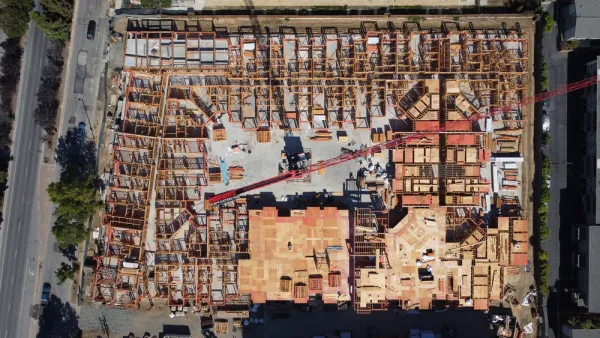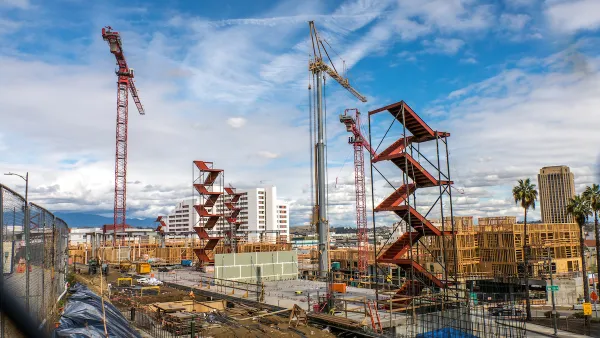Close to two-thirds of the region’s municipalities missed the October 15 deadline to revise their housing elements, jeopardizing state funds and control over local development.

The saga of California’s Regional Housing Needs Assessment (RHNA) continues, with nearly two-thirds of Southern California’s cities and counties failing to meet the deadline for updating their housing elements to satisfy state housing mandates.
As Jeff Collins reports for the Orange County Register, “As a result, the remaining 124 governments have two hurdles to overcome to get into compliance with state housing laws and avoid a host of possible sanctions,” namely getting a new housing element approved and rezoning enough parcels to meet their housing goals. “Governments without an approved housing plan and completed rezoning can lose access to state housing and transportation grants, have less control over future developments and face the risk of lawsuits and fines.” The Southern California city of Santa Monica saw 4,000 housing units proposed when it fell out of compliance with the state law earlier this year.
The RHNA requires cities and counties to revise their housing elements every eight years to account for population growth and ensure that housing supply meets demand. Formerly seen as rather toothless, the process garnered more attention this year when the state rejected many municipalities’ housing elements as unrealistic or insufficient and gave them an October 15 deadline for revising them.
As Collins explains, “The housing plans, which can run into hundreds of pages, outline where and how new housing can be built, creating an inventory of sites where developers can build new homes. Once the housing element is adopted, governments must rezone land to ensure there’s enough land for the new affordable and market-rate housing.”
Collins notes that “On the positive side, the 73 jurisdictions that won state approval represent 65% of the 1.3 million new housing units the state wants Southern California to build by 2030.” However, the needed housing in the jurisdictions without approved plans amounts to 474,210 new homes by 2030. Meanwhile, developers can use the “builder’s remedy” to get projects approved more easily in cities without approved housing elements.
FULL STORY: Most Southern California cities miss new deadline to complete housing plans

Analysis: Cybertruck Fatality Rate Far Exceeds That of Ford Pinto
The Tesla Cybertruck was recalled seven times last year.

National Parks Layoffs Will Cause Communities to Lose Billions
Thousands of essential park workers were laid off this week, just before the busy spring break season.

Retro-silient?: America’s First “Eco-burb,” The Woodlands Turns 50
A master-planned community north of Houston offers lessons on green infrastructure and resilient design, but falls short of its founder’s lofty affordability and walkability goals.

Test News Post 1
This is a summary

Analysis: Cybertruck Fatality Rate Far Exceeds That of Ford Pinto
The Tesla Cybertruck was recalled seven times last year.

Test News Headline 46
Test for the image on the front page.
Urban Design for Planners 1: Software Tools
This six-course series explores essential urban design concepts using open source software and equips planners with the tools they need to participate fully in the urban design process.
Planning for Universal Design
Learn the tools for implementing Universal Design in planning regulations.
EMC Planning Group, Inc.
Planetizen
Planetizen
Mpact (formerly Rail~Volution)
Great Falls Development Authority, Inc.
HUDs Office of Policy Development and Research
NYU Wagner Graduate School of Public Service




























